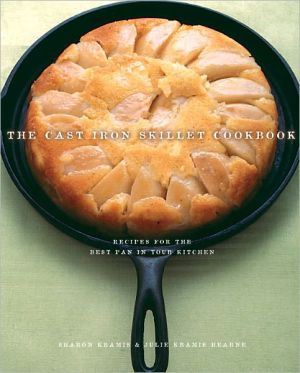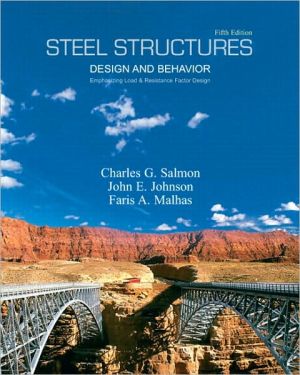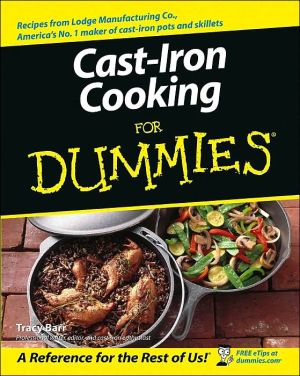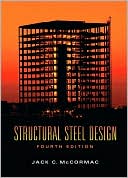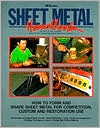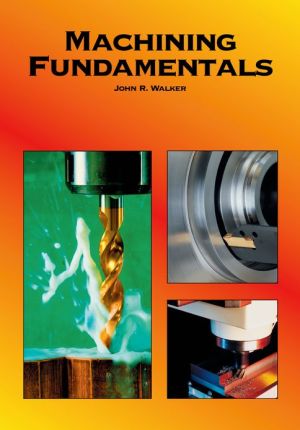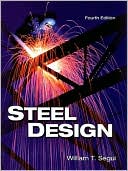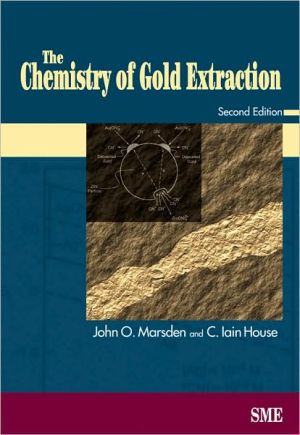A Practical Approach to Quantitative Metal Analysis of Organic Matrices
There has been significant expansion in the application of atomic spectrographic techniques in recent years, which has brought with it the need to provide more flexible methods to a wider range of samples, particularly non-aqueous samples. This book compares the traditional and improved methods in the analysis of non-aqueous samples for elemental analyses by atomic emission spectroscopic methods whilst describing procedures that will attempt to improve sample preparation methods.
Search in google:
There has been significant expansion in the application of atomic spectrographic techniques in recent years, which has brought with it the need to provide more flexible methods to a wider range of samples, particularly non-aqueous samples. This book compares the traditional and improved methods in the analysis of non-aqueous samples for elemental analyses by atomic emission spectroscopic methods whilst describing procedures that will attempt to improve sample preparation methods.
Preface xiiiBiography xvAcknowledgements xvii1 A Practical Approach to Quantitative Metal Analysis of Organic Matrices Using ICP-OES 11.1 Introduction and Basic Overview 11.2 Schematic Representation of the Energies Generated by Atomic Spectroscopic Methods 41.3 Excitation Energy (Quantum Theory and Atomic Spectra) 51.4 Ionisation Energy and Number of Excited Atoms 71.5 Width of Atomic Lines 91.5.1 Natural Broadening 91.5.2 Doppler Broadening 91.5.3 Lorentzian Broadening or Pressure Broadening 91.5.4 Holtsmark Broadening or Resonance Broadening 111.5.5 Field Broadening or Stark Broadening 111.5.6 Self-Absorption and Self-Reversal Broadening 111.6 Brief Summary of Atomic Spectroscopic Techniques Used for Elemental Analysis 121.6.1 The Atomic Absorption Spectrophotometer 121.6.2 Atomic Fluorescence Spectroscopy 131.6.3 Direct Current Plasma Optical Emission Spectrometry (DCP-OES) 131.6.4 Microwave Induced Plasma (MIP) 141.6.5 Glow Discharge Optical Emission Spectrometry (GD-OES) 151.6.6 Inductively Coupled Plasma Optical Emission Spectrometry (ICP-OES) 151.7 Summary: Applications of Atomic Spectroscopy 16References 182 Instrumentations Associated with Atomic Spectroscopy 212.1 Instrumentation 212.2 Types of Plasma Sources 242.2.1 Direct Current Plasma Atomic Emission Spectrograph 252.2.2 Microwave Induced Plasma 252.2.3 Optical Emission Spectroscopy 262.3 Sample Introduction Systems 302.3.1 Mechanical Transfer of Sample/Standards Using Peristaltic Pump, Pressure Valves, Motorised Syringes, etc. 312.3.2 Nebulisers 312.3.3 Brief Outline of Atomic Spectroscopy Hyphenated Systems 392.4Spray Chambers 432.5 ICP-OES Torches 452.6 Optics 492.6.1 Grating Orders 512.7 Signal Detectors 532.7.1 Photomultiplier Tubes 532.7.2 Charge Coupled Devices 55References 583 Methodologies of Metal Analysis of Organic Matrices Using ICP-OES 593.1 Sample Preparation Techniques and Methods of Analysis 593.2 Defining Goals 603.3 Steps in Chemical Analytical Protocol 613.4 Sampling and its Importance 623.5 Sample Preparation Methods 633.5.1 Direct Analysis of Organic Solutions 643.5.2 Sample Dissolution 653.5.3 Chemical Extraction of Metals from Organic Matrices 653.5.4 Dry Ashing without Retaining Aids 663.5.5 Dry Ashing with Retaining Aids 693.5.6 Acid Digestion Using Microwave Oven 693.5.7 Oxygen Bomb Flask Combustion (Low Pressure) 713.5.8 High Pressure Oxygen Combustion 723.5.9 Sample Preparation Using Fusion Methods 733.5.10 Analysis Using Slurry Solution Method 743.5.11 Sample Preparation Using Leaching Method 753.5.12 Sample Preparation Using a UV Digester 753.6 Non-Spectral Corrections Using ICP-OES 763.6.1 Effect of Solvents on ICP-OES 763.6.2 Effect of Viscosity on Signal Response 773.6.3 Comparison of Nebulisation Efficiency of Solvents Using ICP-OES 783.6.4 Choice of Carrier Liquid 803.7 Methodology of Measurement 813.7.1 Choice of Standard Materials 823.7.2 Quantitative Analysis Using Calibration Graph Method 823.7.3 Quantitative Analysis Using Standard Addition Method 853.7.4 Quantitative Analysis Using Internal Standard Method 873.7.5 Quantitative Analysis Using Matrix Matching Method 883.7.6 Quantitative Analysis Using Flow Injection Technique 893.8 Validation of an Analytical Method 903.8.1 Method Validation of Analysis of Organic Matrices 913.9 Control and Range Charts 993.10 Brief Outline of Measurement Uncertainty 101References 1054 Analysis of Plastics, Fibres and Textiles for Metals Content Using ICP-OES 1074.1 A Brief History of Natural and Synthetic Plastic Materials 1074.2 A Brief History of Chemistry of Plastics 1094.3 Chemical Structure of Plastics 1104.4 Polymerization Process of Plastics 1114.4.1 Polymerisation by Addition Reactions 1124.4.2 Polymerisation by Condensation Reactions 1124.5 Additives in Plastics 1134.6 Methods of Sample Preparation for Metal Content of Plastics, Fibres and Textiles 1154.6.1 Sample Preparation Using Dissolution Method 1154.6.2 Sample Preparation Using Dry Ashing Methods 1174.6.3 Sample Preparation Using Microwave Acid Digestion Method 1194.6.4 Sample Preparation Using Oxygen Bomb Combustion Method 1214.7 Comparative Study of Methods of Analysis of Plastic Samples for Metals Content 1214.8 Study of Leaching of Metals from Plastics 1234.8.1 Study of Leaching of Metals from Children's Toys 1244.9 Analysis for Toxic Metals in Plastics and Non-Electrical Additives Used in Electrical and Electronic Components as Required by RoHS 1254.9.1 Method for Metal Analysis of Plastics and Non-Electrical Additives Used in Electrical and Electronic Products 1274.10 Conclusion 131References 1325 Metal Analysis of Virgin and Crude Petroleum Products 1335.1 Introduction 1335.2 Brief Introduction to Refining Process in the Petroleum Industry 1345.3 Metals in Crude Oils and Petroleum Products 1355.4 Requirements for the Determination of Metal Content in Virgin and Crude Oils 1365.5 Wear Metals and Metal Contaminants in Lubricating Oils 1385.6 Brief Outline of the Determination of Metals in Organic Materials Using Atomic Spectroscopy Methods 1395.7 Application of Atomic Spectroscopic Techniques in the Analysis of Virgin and Wear Oils for Metals Content 1405.7.1 Choice of Solvents Suitable for Metal Analysis of Crude and Lubricating Oils Using ICP-OES 1415.7.2 Selection of Representative Samples in the Study of Metal Analysis of High Viscosity and Low Viscosity Oil Blends 1415.7.3 Physical Properties of Selected Solvents for Dissolving High Viscosity and Low Viscosity Oils for Metal Analysis 1425.7.4 Methods of Sample Preparation for Metal Analysis of High Viscosity and Low Viscosity Oil Blends 1425.7.5 Long-Term Study of Metal Analysis Using Kerosene, Teralin and Decalin Solvents Using ICP-OES 1435.7.6 Comparative Study of Non-Destructive Methods of Analysis of Metals 'Spiked' in High Viscosity and Low Viscosity Oil Blends Using ICP-OES 1445.8 Analysis of Type C and D Fractions for Metal Content Using Dry Ashing Method 1495.9 Analysis of 'Metal Spiked' Oil Blends Using Microwave Acid Digestion for Metals Content 1505.10 Analysis of 'Metal Spiked' Oil Blends Using High Pressure Oxygen Combustion for Metals Content 1525.11 Comparative Study of Analysis of Trace Levels of Toxic Metals Using Microwave Acid Digestion and Oxygen Bomb Combustion 1535.11.1 Conclusion to Trace Analysis of Toxic Metals in Oil Products 1555.12 Extraction Method for the Determination of Metals of High Viscosity and Low Viscosity Oil Blends 1555.13 Analysis of Old Lubricating Oil for Total Metal Content Using a Slurry Method with Internal Standard 1565.14 Conclusion 158References 1606 Metal Analysis of Structural Adhesives 1616.1 Introduction 1616.2 Setting and Curing of Adhesives 1626.3 Introduction to Modern Synthetic Adhesives 1626.3.1 Cyanoacrylate Adhesives 1626.3.2 Anaerobic and Acrylic Adhesives 1636.3.3 Epoxy Structural Adhesives 1656.3.4 Phenolic Adhesives 1676.3.5 Polyurethane Adhesives 1676.4 Metal Salts and Concomitant Metals in Adhesives 1686.5 Metals Associated with Cyanoacrylate Adhesives 1696.6 Non-Destructive Methods of Analysis for Metals Content in Cyanoacrylate Adhesives 1706.6.1 General Method 1706.6.2 Standard Addition Method 1716.6.3 Internal Standard Method 1716.7 Destructive Methods of Analysis for Metals Content in Cyanoacrylate Adhesives 1726.7.1 Sample Preparation Using Ashing Method 1736.7.2 Sample Preparation Using Microwave Acid Digestion 1746.7.3 Sample Preparation Using Oxygen Bomb Combustion 1746.8 Conclusion to Analysis of Cyanoacrylate Products 1756.9 Metals Associated with Anaerobic Adhesives 1766.10 Destructive Methods of Sample Preparation for Metals Content in Anaerobic Adhesives 1776.10.1 Ashing Method of Type A and Type B Anaerobic Adhesives 1776.10.2 Sample Preparation of Anaerobic Adhesives Using Microwave Acid Digestion 1786.10.3 Sample Preparation of Anaerobic Adhesive Using Oxygen Bomb Combustion 1806.10.4 Conclusion to Analysis of Anaerobic Adhesives 1806.11 Metal Analysis of Chemical Raw Materials Used to Manufacture Anaerobic Adhesives 1816.11.1 Column Extraction of Metal from Liquid Monomers 1816.12 Analysis of Metal Salt Content Dissolved in Aerosol Solvent(s) 1826.12.1 Sample Preparation and Analysis of Metals in Aerosol 1836.13 A Study of the Effects of Anaerobic Adhesives on Metallic Substrates 1836.14 Metals Associated with Epoxy Adhesives 1866.14.1 Composition of Epoxy Adhesives 1876.14.2 Preparation of Epoxy Adhesive 'Spiked' with Ge(AcAc)BF[subscript 4] 1876.14.3 Determination of the Concentration of Ge(AcAc)BF[subscript 4] in Epoxy Adhesives Using Non-Destructive Methods 1886.14.4 Determination of the Concentration of Ge(AcAc)BF[subscript 4] in Epoxy Adhesives Using Destructive Methods 1906.14.5 Conclusion of Metal Analysis of Epoxy Adhesives 1926.15 Metals Associated with Phenolic Adhesives 1936.15.1 Preparation of Typical Phenolic Adhesives Containing Calcium and Copper Sulphonate Salts 1936.15.2 Non-Destructive Methods of Analysis of Phenolic Adhesives 1946.16 Metals Associated with Polyurethane Adhesives 1946.16.1 Preparation and Analysis of Polyurethane Adhesives Containing Organometallic Catalysts 1956.17 Conclusion to Metal Analysis of Phenolic and Polyurethane Adhesives 197References 1987 Hyphenated and Miscellaneous Techniques Used with ICP-OES 1997.1 Introduction 1997.2 Coupling of Flow Injection Analysis with ICP-OES 2007.2.1 Theory of Flow Injection 2017.2.2 Configuration of ICP-OES/FIA System 2027.2.3 Signal Acquisition and Data Management 2037.2.4 Reproducibility of Measurements Using ICP-OES/FIA 2047.2.5 Dispersion and Diffusion of 'Sample Plug' in a Carrier Stream 2057.2.6 Metal Analysis of Organic Compounds Using ICP-OES-FIA 2067.2.7 Effect of Loop Size on Signal Response 2077.2.8 Comparative Measurements of Peak Height and Peak Area 2087.2.9 Effect of Viscosity Using ICP-OES/FIA 2097.2.10 A Study of Solvent Effects Using ICP-OES/FIA 2107.2.11 Determination of Limit of Detection and Quantification 2107.2.12 Conclusions of Analysis Using ICP-OES-FIA 2117.3 Use of Internal Standard(s) with ICP-OES 2137.3.1 Conclusion to Internal Standard(s) Study 2177.4 Coupling of Ion Chromatography with ICP-OES 2187.4.1 Preconcentration of Metals Using Ion Chromatography 2207.4.2 Analysis of Lanthanide and Transition Metals with ICP-OES/IC 2217.5 Coupling of Gas Chromatography with ICP-OES or Atomic Emission Detector 2227.6 Metal Analysis Using ICP-OES Coupled with Electro-Thermal Vaporisation 2247.7 Surface Analysis Using Laser Ablation with ICP-OES 2267.8 Determination of Thickener Content of Paints, Pharmaceutical Products and Adhesives Using ICP-OES 2277.9 Metal Analysis of Metallo-Pharmaceutical Products 2307.9.1 Metallic Type Antibiotic Drugs 2337.9.2 Platinum and Palladium Drugs for Cancer Treatments 2347.10 Metal Analysis of Infusion and Dialysis and Bio-Monitoring Solutions 2357.11 Organometallic Compounds 2367.12 Metals and Metalloid Analysis in Support of Forensic Science 2377.13 Non-Prescription Nutritional Dietary Supplements 2397.14 Trace Metal Analysis of Foods 2447.14.1 General Methods of Metal Analysis of Foods 2447.14.2 Conclusion to Food Analysis 246References 246Index 249

